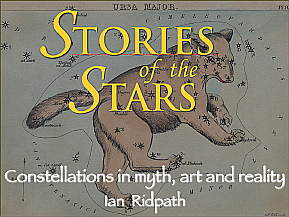
"The primary merit for the picture is to be a feast for the eyes." Delacroix “Design is not just what it looks like and feels like. Design is how it works.” - Steve Jobs "Imagination is more important than knowledge. For knowledge is limited to all we now know and understand, while imagination embraces the entire world, and all there ever will be to know and understand." –Dr. Albert Einstein "Wonder is comes from the awareness of ignorance of religious mass"
2013. február 28., csütörtök
2013. február 22., péntek
| |||||||||||||||||||||||||||||
History of Science lecture)
| |||||||||||||||||||||||||||||
Stories of the stars | ||||||||
Every night, a pageant of Greek mythology is enacted among the stars. Perseus flies to the rescue of princess Andromeda, mighty Orion faces the charge of Taurus the bull, the herdsman Boötes chases the Great Bear around the celestial pole, and the god Zeus flies along the Milky Way in the guise of a swan. This talk will recount these famous legends, illustrated by classic works of art, and identify the constellations associated with them. Using images from the world’s most powerful telescopes, we will look in more detail at some of the fabulous objects that modern astronomers have discovered in those same areas of sky, from the birthplaces of stars to black holes and distant galaxies, which tell real-life stories that are every bit as fantastic as the Greek myths.
Running time: 45 minutes. Sound required
| ||||||||
2013. február 21., csütörtök
Greda Taro - fatal fate near Capa


A photograph of a woman in Barcelona, Spain training for a Republican militia in August 1936, taken by Gerda Taro. Now, 70 years after Ms. Taro’s death at age 26, the first major exhibition of her work begins Sept. 26 at the International Center of Photography in Manhattan. Many of Ms. Taro’s sympathetic and graphic photographs of supporters of the Spanish Republic will be seen for the first time.
Photo: International Center of Photography

"Gerda Taro, Guadalajara Front, Spain," July 1937, by an unknown photographer. Ms. Taro, seen by many as the first woman known to photograph a battle from the front lines and to die covering a war, survived in the public eye mostly for her romance with Robert Capa.
Photo: International Center of Photography

Ms. Taro and Mr. Capa in Paris, 1936. Because the two photographers worked together, some of Ms. Taro’s photographs were published under Mr. Capa’s name or with a joint byline.
Photo: Fred Stein/ International Center of Photography

"Gerda Taro and soldier, Córdoba Front, Spain," 1936, by Mr. Capa. After her brief career ended, a flood of photographs of World War II helped push her work off the stage and Ms. Taro all but disappeared from public consciousness.
Photo: Cornell Capa/International Center of Photography

Three Republican soldiers on a field telephone, Segovia Front, Spain, June 1937. Ms. Taro’s work was published in the Parisian newspaper Ce Soir and in the French magazine Regards, among other places; in the United States, her death was reported in Life magazine, which also ran some of her photographs.
Photo: International Center of Photography

Republican dinamiteros, in the Carabanchel neighborhood of Madrid, June 1937

Ms. Taro's shot of a boy in an Iberian Anarchist Federation cap. Ms. Taro’s celebrity was short-lived but outsize. Shortly after establishing herself independently of Mr. Capa, she was sideswiped by a tank after jumping onto the running board of a car transporting casualties during the battle of Brunete, and killed. Her funeral in Paris drew thousands who hailed her as a martyr to anti-Fascism.

A Republican soldier playing the bugle, Valencia, March 1937. The exhibition is one of four concurrent shows at the Center related to the Spanish Civil War, including a display of Capa war pictures.
Photo: International Center of Photography
 y
y
Women training for a Republican militia outside Barcelona, August 1936. The I.C.P. show, which includes about 100 of her photographs, highlights Ms. Taro as an artist in her own right and as an important figure in both the changing role of women and the use of art as propaganda.
Photo: International Center of Photography
2013. február 17., vasárnap
2013. február 15., péntek
martyna galla photostory olga






OLGA BUTKIEWICZ / PREMIER
STYLE ALA KLITENIK
MAKE UP & HAIR MARIANNA JURKIEWICZ/ DIVISION ART


2013. február 10., vasárnap
2013. február 2., szombat
Feliratkozás:
Bejegyzések (Atom)























